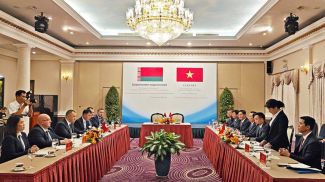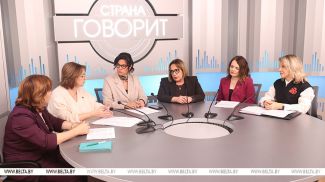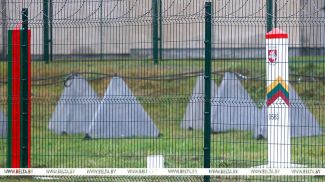
The Russian hypersonic missile Oreshnik made waves across the globe. Last week, Russia used this missile for the first time to strike a military-industrial facility in Ukraine. Moscow called the test of the Oreshnik in combat conditions a forced measure, a response to strikes on Russian territory by Western long-range missiles. The West regarded the use of the Russian missile as a signal from the Kremlin to NATO countries. At the same time, Western experts admit that by launching the Oreshnik, Russia has demonstrated its real military capabilities.
What is the Oreshnik? Why is it compared to nuclear weapons? Can modern air defense intercept such a missile and what impact will the know-how of the Russian rocket engineering have on the course of the Ukrainian conflict. We talk about this in the review of BelTA.
45 Hiroshimas. What is Oreshnik missile?
The technical characteristics of the hypersonic ballistic missile Oreshnik were published on the Russian government website Объясняем.рф this week.
According to the description, the maximum striking distance of the Oreshnik is 5,500 kilometers. The maximum flight speed is 10 Mach (12,380 km/h). The missile is capable of carrying a warhead weighing up to 1.5 tonnes.
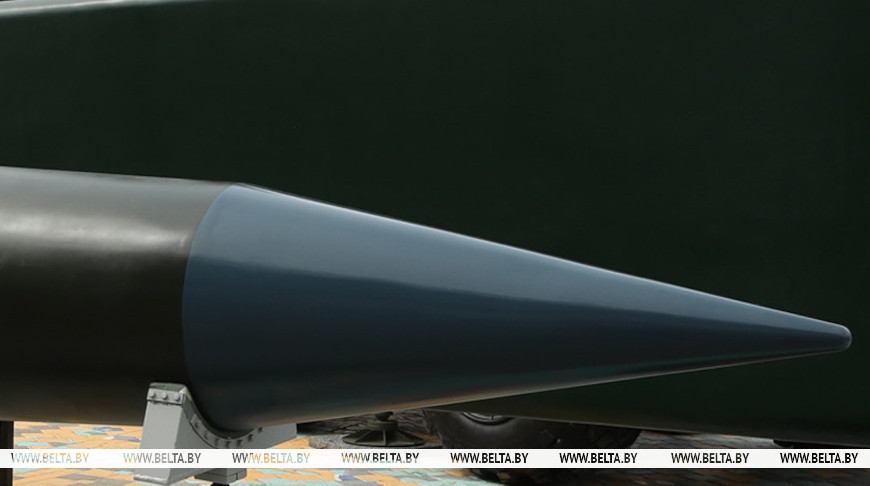
“In nuclear version, Oreshnik can deliver charges with a total yield of 900 kilotons (45 Hiroshimas),” the description reads.
The Oreshnik can be intercepted only during the initial phase of flight. Therefore, the missile is launched from deep within Russian territory - from the Kapustin Yar test range in Astrakhan Oblast. The warheads approach the target at maximum speed, and interception at this stage is impossible.
The time of approach to potential targets in Europe from Kapustin Yar is also specified. Thus, it will take 11 minutes for the missile to reach the U.S. missile defense base in Redzikowo, Poland, 15 minutes to reach the Ramstein air base in Germany, and 17 minutes to the NATO headquarters in Brussels.
Comparable to nuclear weapons. What did Putin say?
Russian President Vladimir Putin spoke about the power of the Oreshnik and potential targets when speaking at the CSTO summit on 28 November.
According to Vladimir Putin, Russia was forced to test the Oreshnik in combat due to the strikes with Western long-range ATACMS and Storm Shadow missiles on Bryansk Oblast and Kursk Oblast.
The Russian leader noted that “there are, of course, no analogues of the Oreshnikin the world, and I believe that such analogues are unlikely to appear soon.”
He also explained how the Russian missile “works”. “Dozens of combat blocks, homing warheads attack the target at a speed of Mach 10, that's about 3 kilometers per second. The temperature of the striking elements reaches 4,000 degrees Celsius. If my memory serves me right, the temperature on the surface of the Sun is 5,500-6,000 degrees. Therefore, everything in the epicenter of the explosion is separated into fractions, into elementary particles, turns, in fact, into dust. The missile strikes even highly protected objects deep underground,” Vladimir Putin said.
According to military and technical experts, in the case of massive use of these missiles - a bunch of them in one strike - the power of the strike would be comparable to the use of nuclear weapons. At the same time, Putin noted that the Oreshnik is not a weapon of mass destruction. It is a precision weapon that does not carry any nuclear charge, which means that there will be no nuclear contamination after its use.
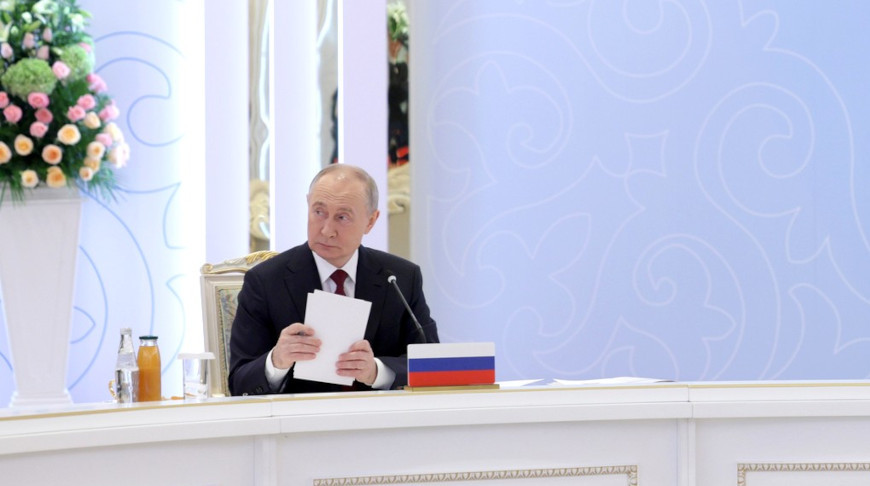
Vladimir Putin said that Russia has several hypersonic strike missile systems like the Oreshnik ready for use. He also warned that decision-making centers in Ukraine could be targeted. “Currently, the Defense Ministry and the General Staff of the Russian army are selecting targets for strikes on the territory of Ukraine. These could be military facilities, defense industry enterprises or decision-making centers in Kiev. Especially since the Kiev regime has repeatedly tried to strike targets of state importance in Russia: St. Petersburg and Moscow. These attempts continue,” the Russian leader said.
“The batch production of the Oreshnik has begun,” Vladimir Putin added. “But ultimately we will choose the weapons of destruction depending on the nature of the targets and the threats posed to the Russian Federation.”
Later, speaking to reporters, Vladimir Putin said Russia is working to improve the Oreshnik. Already now the impact force of the missile is colossal: everything in the epicenter is turned into ash. But the missile's power can be increased further.
The Russian president also compared the Russian missile to a meteorite: “We know from history what meteorites fell where, and what the consequences were. Sometimes it was enough to form entire lakes.”
He noted that Russia has enough weapons, but the Oreshnik will strengthen the country's military capabilities.
‘It was a shock.’ What do experts say?
Russian military observer of the Komsomolskaya Pravda newspaper, retired colonel Viktor Baranets spoke about the main advantages of the Oreshnik missile in the latest episode of BelTA’s YouTube project on Point [V Teme].
“First of all, it is a hypersonic missile,” the expert said. “No radar in the world can detect such a speed. People operating missile defense systems cannot yet deceive the laws of physics. And if a missile cannot be spotted by a radar, it is even less possible to intercept it. It is useless,” Viktor Baranets noted.
The military observer went on saying that the Oreshnik carries several warheads. “I am often asked: “Viktor Nikolayevich, even if these were TNT warheads, why was there no fountain of explosions?” But this is the feature of these warheads. They penetrated certain facilities of Yuzhmash located at a great depth, and exploded at the workshops that were hidden six meters underground. For us, this was the most important thing - to destroy everything that was being created there,” he emphasized.
Viktor Baranets noted that the people who launch the Oreshnik know very well how to use it. “I am absolutely sure that we calculated why Oreshnik needed to hit Yuzhnmash specifically. We knew that experts there are trying to make missiles. But there are also foreign systems [of weapons]. We hit the means of destruction which we considered the most important for us,” the military observer said
“We have sent a signal to Ukraine and the West that we will not tolerate their insolence any longer,” the military observer added.
The military expert noted that Moscow was closely monitoring the West's reaction to the use of the Oreshnik missile. “On the one hand, it was a shock. It was followed by some mocking: look, Putin has only one such missile, and we did not see any mushroom clouds from the explosions and so on. And then some concern started to show up: yes, we know that the production of these missiles has been established. And the most important thing is that this supposedly non-existent missile passed its first state exam brilliantly,” he remarked.
The expert noted that the first use of the Oreshnik took place in a real combat situation. “Yuzhmash had air defense systems, including Patriots. The Ukrainians are not fools, they understand that this is a strategic facility that needs to be protected. But the missile flew by without a single shot, it was not even detected,” he added.
The military observer emphasized that Moscow had warned Washington about its plans to use the Oreshnik. Despite this, the launch itself was never detected.
Russian military analyst and political scientist Vadim Mingalev believes that the Oreshnik is a breakthrough of domestic engineering. Russia’s solutions in rocket engineering are 10-15 years ahead of those of all other countries of the world, the expert said in an interview with Izvestia.
“It is impossible to defend oneself against this missile. No country, including the United States, with their much-touted Patriot anti-aircraft missile system or other weapons, can defend themselves against the Oreshnik. This is definitely a leap forward for Russia’s defense industry. Indeed, this is a revolutionary thing. This missile will instill awe. It has already sent Western countries into varying degrees of shock and panic. Our rocket engineering is breaking away from the rocket engineering of European countries and the United States,” Mingalev said.
The military expert pointed out that the United States made a serious strategic mistake by withdrawing from the Intermediate-Range Nuclear Forces Treaty (INF).
“Today we can be proud that Russian military science has achieved an advantage. And we are now ahead of the rest of the world. This inevitably caused a certain irritation and even fear. Our missiles are superior to all other missiles, be it American or European ones. The Anglo-French development Storm Shadow/SCALP-EG is a thing of the last century. Our design solutions are 10-15 years ahead of all similar developments of all countries of the world,” Mingalev concluded.
Russia’s use of new Oreshnik ballistic missiles was a game changer in the Ukraine conflict. It has caused serious concern in the West, since it does not have the means to defend itself against these weapons, former Indian diplomat, expert on international security Melkulangara Bhadrakumar told TASS.
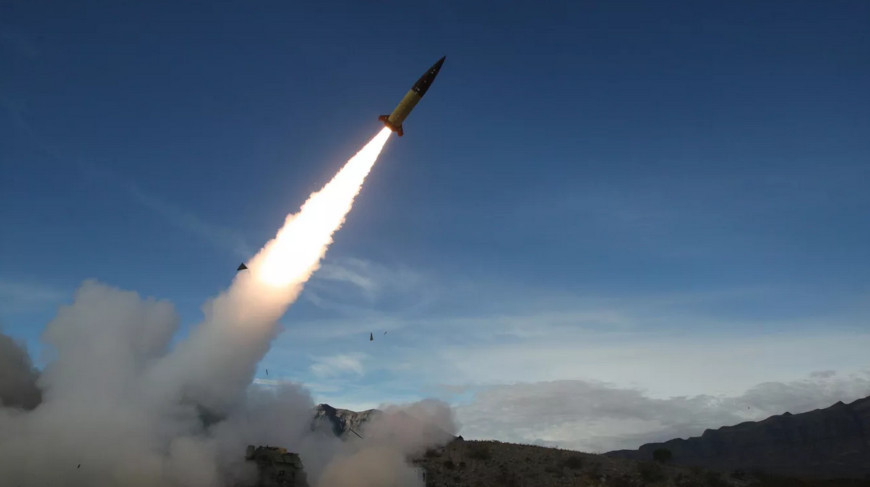
The Oreshnik caused a paradigm shift in the war in Ukraine. The belief that Russia would bluff about nuclear deterrence has given way to fear, since now Russia may not need nuclear weapons to respond to attacks on its territory. “The Oreshnik is a non-nuclear weapon, not a weapon of mass destruction, but it is a precision weapon of enormous destructive power that erases its targets, and the Europeans have no means of defending themselves against it,” the expert noted.
According to Melkulangara Bhadrakumar, NATO is very concerned about the situation, but will still not accept Russia’s victory. “Hotheads in the West are again talking about deploying NATO troops to Ukraine for combat operations, which was discussed by French President Emmanuel Macron in February,” he noted.
“Yet, unless the USA is ready to engage in combat action, the rest of NATO will just run around like a headless chicken. Britain, with an army of 80,000, has very few combat units, the German army of 175,000 has forgotten how to fight, and France is in a deep political and economic crisis. As for the USA, public opinion is against wars, President-elect Donald Trump cannot disregard this,” the expert said.
Reflecting on steps that might be undertaken by Europe, which is frightened by Trump’s reluctance to support the conflict, Melkulangara Bhadrakumar voiced a number of proposals that could be put forward to the USA. “Along with the carrot in the form of huge reserves of critical minerals in Ukraine, that the Americans badly need, there could be more trade incentives for the USA, there could be greater spending on NATO, pressure on Iran, peacekeeping forces in Ukraine, assistance in Trump's upcoming economic skirmishes with China, and so on”, he noted.
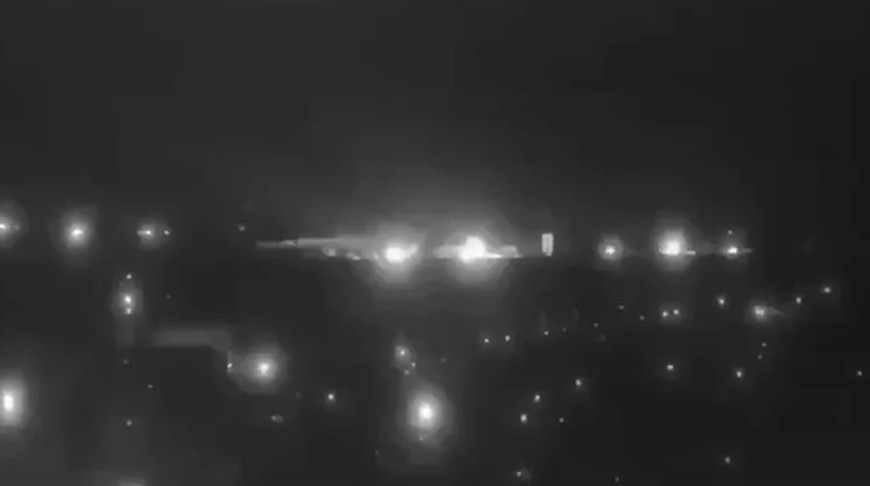
The strike by the hypersonic missile Oreshnik sent shock waves around the world, Director of the Institute of CIS Countries in Sevastopol, military expert, retired Captain First Rank Sergei Gorbachev told RIA Novosti. “The Oreshnik missile made front page news in the world and affected our immediate enemy - the Kiev regime and NATO countries,” Sergei Gorbachev said.
According to him, now that Russia has this missile, it will help cool down the “hotheads from among the military in the West”. “I think that the West will ponder on it and draw conclusions: it is time to listen to Russia and start working towards peace on entire planet, and not just in Europe. Having developed this new missile, Russia has sent a serious message to the outgoing Biden administration and the new administration of Trump. It is expected to encourage the president-elect to look at things realistically and begin his tenure with real steps to de-escalate tensions in the world and “bring the international situation into line with the reality on the ground,” the expert concluded.
The use of the hypersonic missile Oreshnik is also actively commented on by Western experts. Thus, military analysts interviewed by The New York Times said that the Oreshnik is currently the longest-range weapon ever used in conflicts on the European continent. Professor Jeffrey Lewis, a non-proliferation expert at the Middlebury Institute of International Studies, believes that the Oreshnik strike demonstrated Russia's real military capabilities and caused great damage to Ukrainian forces.
According to Professor Tom Karako, Director of the Missile Defense Project at the Washington-based Center for Strategic and International Studies, Oreshnik causes colossal damage due to the huge speed of its multiple warheads. Modern air defense systems are not capable of intercepting such missiles.
A similar opinion is held by Matthew Savill, director of military sciences at the London-based Royal United Services Institute. In a comment to the Associated Press, he said that the Oreshnik missile was capable of releasing multiple warheads at extremely high speeds, even a Patriot would have a hard time intercepting them.
Savill said the new missile is sending a fear-inducing signal from Russia that “we’ve got stuff that outrages you.”
The larger message to the West is that “we’re happy to enter into a competition around intermediate-range ballistic missiles. P.S. These could be nuclear tipped. Do you really want to take that risk?’”
The military observer emphasized that Moscow had warned Washington about its plans to use the Oreshnik. Despite this, the launch itself was never detected.
Russian military analyst and political scientist Vadim Mingalev believes that the Oreshnik is a breakthrough of domestic engineering. Russia’s solutions in rocket engineering are 10-15 years ahead of those of all other countries of the world, the expert said in an interview with Izvestia.
“It is impossible to defend oneself against this missile. No country, including the United States, with their much-touted Patriot anti-aircraft missile system or other weapons, can defend themselves against the Oreshnik. This is definitely a leap forward for Russia’s defense industry. Indeed, this is a revolutionary thing. This missile will instill awe. It has already sent Western countries into varying degrees of shock and panic. Our rocket engineering is breaking away from the rocket engineering of European countries and the United States,” Mingalev said.
The military expert pointed out that the United States made a serious strategic mistake by withdrawing from the Intermediate-Range Nuclear Forces Treaty (INF).
“Today we can be proud that Russian military science has achieved an advantage. And we are now ahead of the rest of the world. This inevitably caused a certain irritation and even fear. Our missiles are superior to all other missiles, be it American or European ones. The Anglo-French development Storm Shadow/SCALP-EG is a thing of the last century. Our design solutions are 10-15 years ahead of all similar developments of all countries of the world,” Mingalev concluded.
Russia’s use of new Oreshnik ballistic missiles was a game changer in the Ukraine conflict. It has caused serious concern in the West, since it does not have the means to defend itself against these weapons, former Indian diplomat, expert on international security Melkulangara Bhadrakumar told TASS.

The Oreshnik caused a paradigm shift in the war in Ukraine. The belief that Russia would bluff about nuclear deterrence has given way to fear, since now Russia may not need nuclear weapons to respond to attacks on its territory. “The Oreshnik is a non-nuclear weapon, not a weapon of mass destruction, but it is a precision weapon of enormous destructive power that erases its targets, and the Europeans have no means of defending themselves against it,” the expert noted.
According to Melkulangara Bhadrakumar, NATO is very concerned about the situation, but will still not accept Russia’s victory. “Hotheads in the West are again talking about deploying NATO troops to Ukraine for combat operations, which was discussed by French President Emmanuel Macron in February,” he noted.
“Yet, unless the USA is ready to engage in combat action, the rest of NATO will just run around like a headless chicken. Britain, with an army of 80,000, has very few combat units, the German army of 175,000 has forgotten how to fight, and France is in a deep political and economic crisis. As for the USA, public opinion is against wars, President-elect Donald Trump cannot disregard this,” the expert said.
Reflecting on steps that might be undertaken by Europe, which is frightened by Trump’s reluctance to support the conflict, Melkulangara Bhadrakumar voiced a number of proposals that could be put forward to the USA. “Along with the carrot in the form of huge reserves of critical minerals in Ukraine, that the Americans badly need, there could be more trade incentives for the USA, there could be greater spending on NATO, pressure on Iran, peacekeeping forces in Ukraine, assistance in Trump's upcoming economic skirmishes with China, and so on”, he noted.

The strike by the hypersonic missile Oreshnik sent shock waves around the world, Director of the Institute of CIS Countries in Sevastopol, military expert, retired Captain First Rank Sergei Gorbachev told RIA Novosti. “The Oreshnik missile made front page news in the world and affected our immediate enemy - the Kiev regime and NATO countries,” Sergei Gorbachev said.
According to him, now that Russia has this missile, it will help cool down the “hotheads from among the military in the West”. “I think that the West will ponder on it and draw conclusions: it is time to listen to Russia and start working towards peace on entire planet, and not just in Europe. Having developed this new missile, Russia has sent a serious message to the outgoing Biden administration and the new administration of Trump. It is expected to encourage the president-elect to look at things realistically and begin his tenure with real steps to de-escalate tensions in the world and “bring the international situation into line with the reality on the ground,” the expert concluded.
The use of the hypersonic missile Oreshnik is also actively commented on by Western experts. Thus, military analysts interviewed by The New York Times said that the Oreshnik is currently the longest-range weapon ever used in conflicts on the European continent. Professor Jeffrey Lewis, a non-proliferation expert at the Middlebury Institute of International Studies, believes that the Oreshnik strike demonstrated Russia's real military capabilities and caused great damage to Ukrainian forces.
According to Professor Tom Karako, Director of the Missile Defense Project at the Washington-based Center for Strategic and International Studies, Oreshnik causes colossal damage due to the huge speed of its multiple warheads. Modern air defense systems are not capable of intercepting such missiles.
A similar opinion is held by Matthew Savill, director of military sciences at the London-based Royal United Services Institute. In a comment to the Associated Press, he said that the Oreshnik missile was capable of releasing multiple warheads at extremely high speeds, even a Patriot would have a hard time intercepting them.
Savill said the new missile is sending a fear-inducing signal from Russia that “we’ve got stuff that outrages you.”
The larger message to the West is that “we’re happy to enter into a competition around intermediate-range ballistic missiles. P.S. These could be nuclear tipped. Do you really want to take that risk?’”




